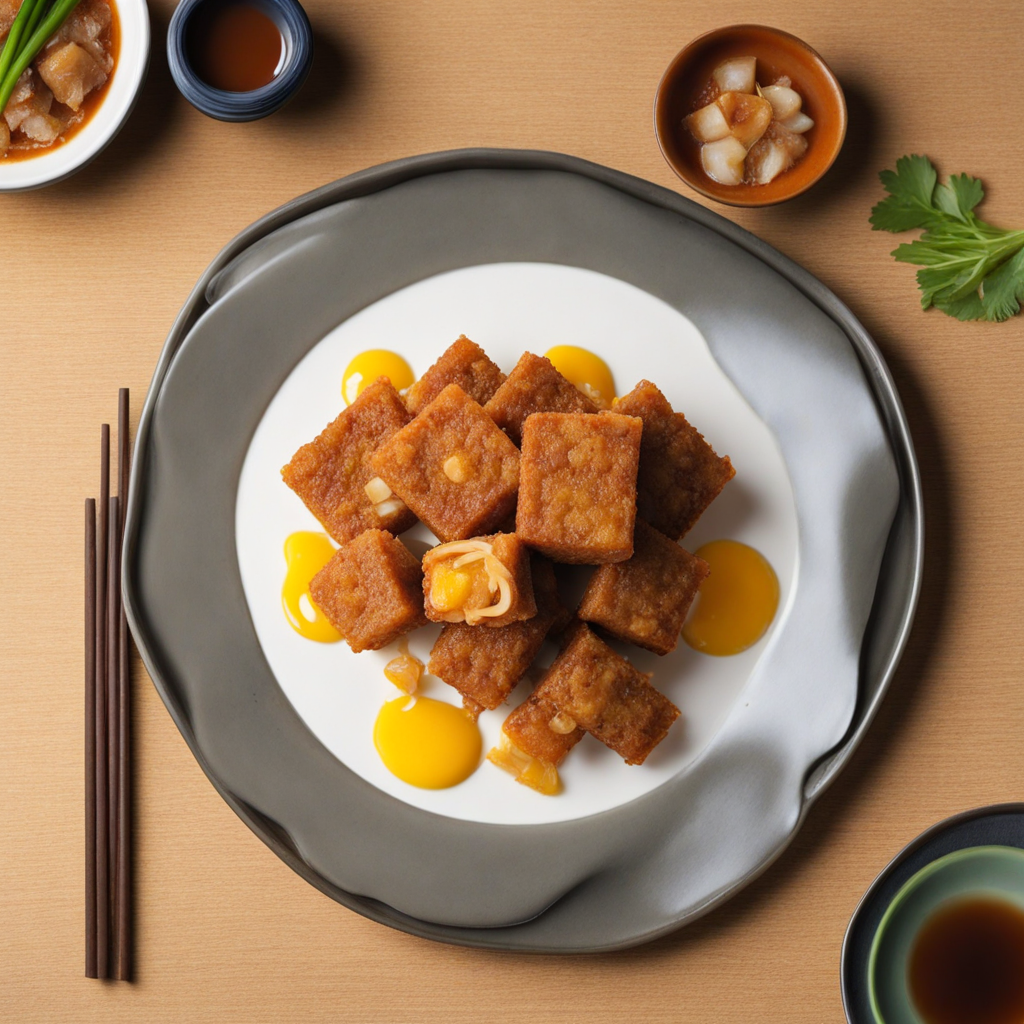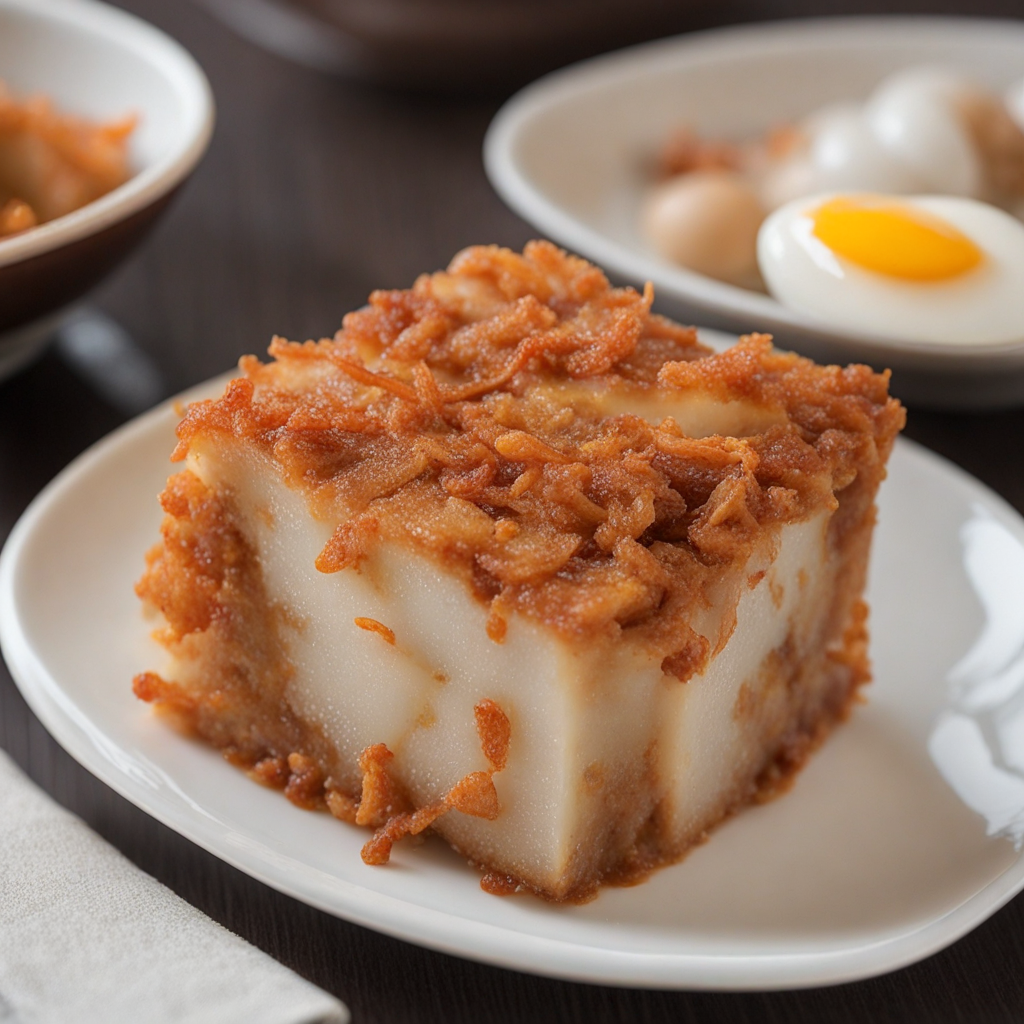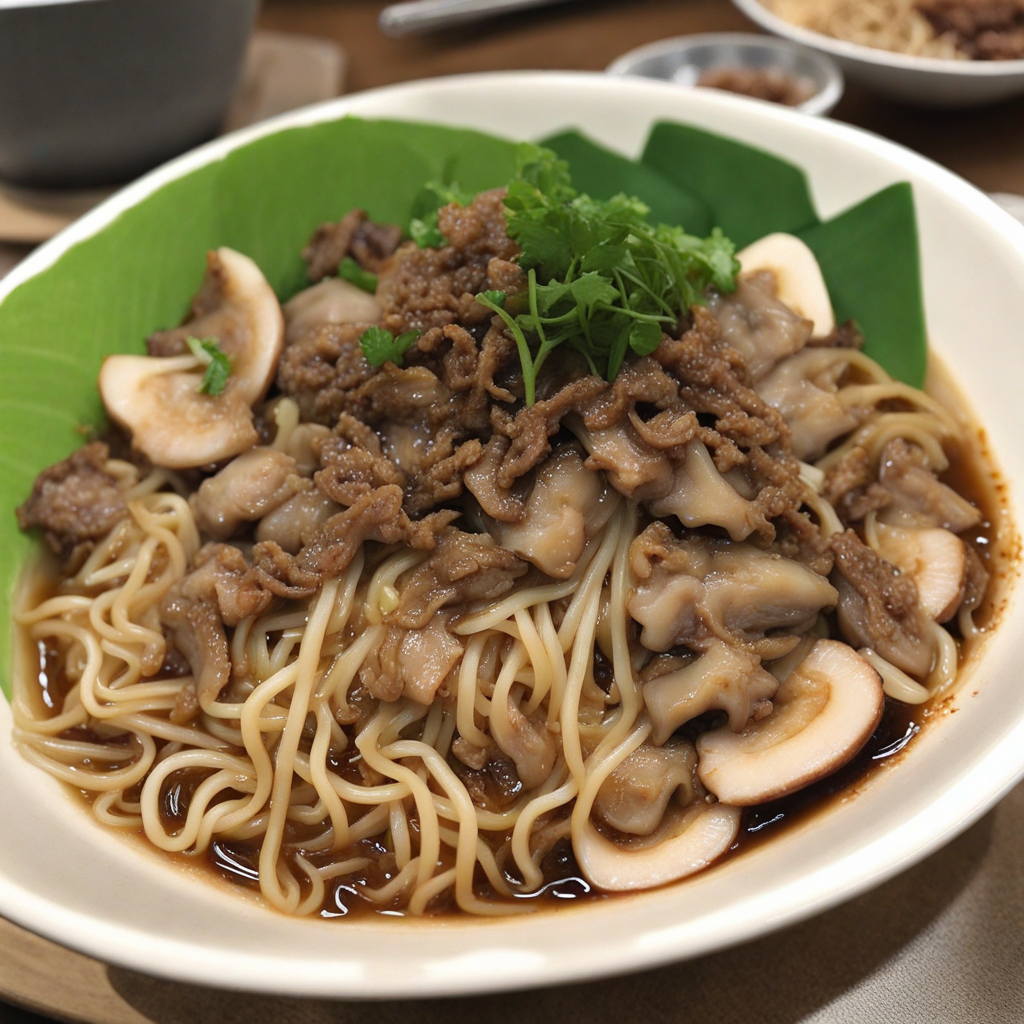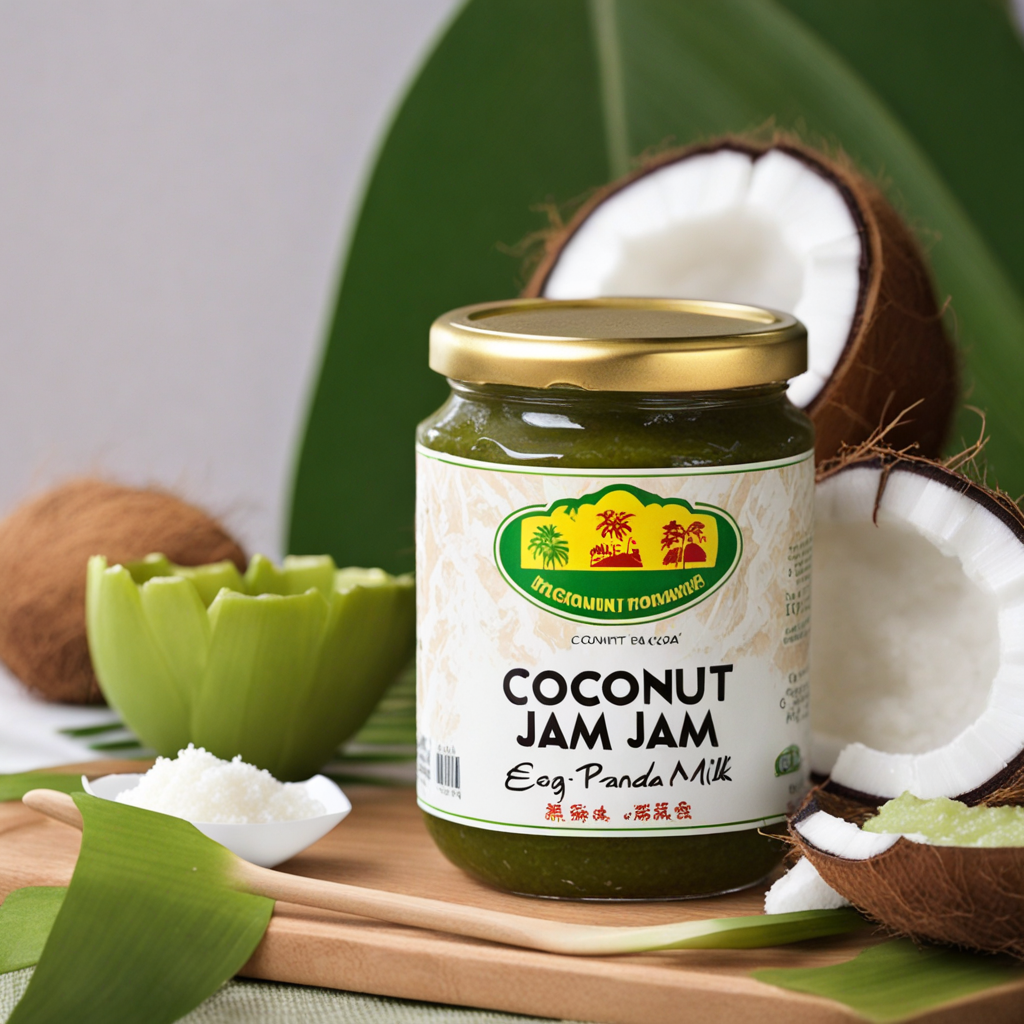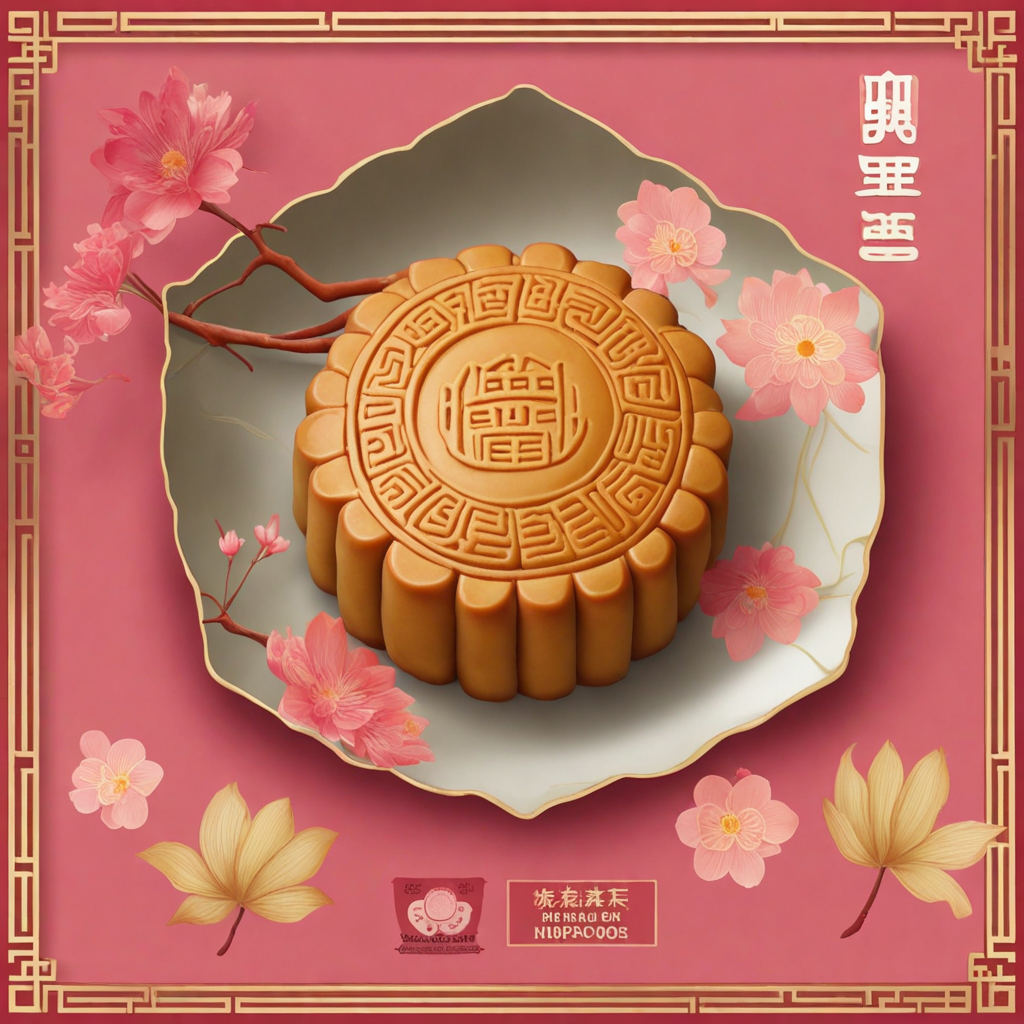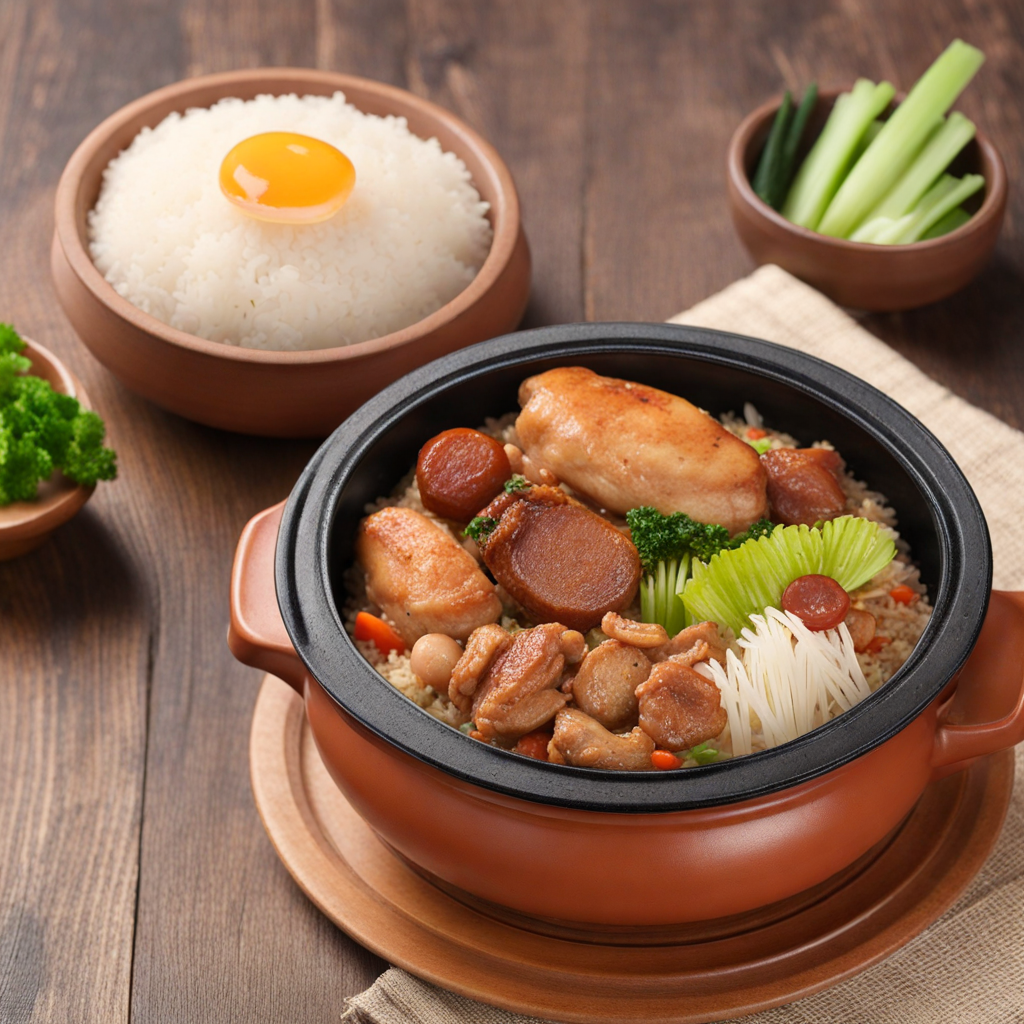Carrot Cake (Chai Tow Kway)
Carrot Cake, or Chai Tow Kway, is a beloved dish in Singapore that offers a delightful twist on the traditional carrot cake found elsewhere. Despite its name, this dish does not contain the sweet, spiced cake that many are familiar with; instead, it refers to a savory stir-fried dish made from radish cake, known as 'chai tow' in Hokkien. The main ingredient is a firm, steamed cake made primarily from rice flour and grated white radish, which is then cut into cubes and pan-fried until crispy on the outside while remaining soft and chewy on the inside. The flavor profile of Chai Tow Kway is both complex and comforting. It is typically seasoned with soy sauce, garlic, and sometimes a touch of chili for a hint of heat. The dish can be prepared in two styles: the white version, which highlights the natural flavors of the radish cake with just a sprinkle of soy sauce, or the black version, which incorporates sweet dark soy sauce, adding a rich sweetness and deep color to the dish. Toppings such as green onions, eggs, and even a sprinkle of fried shallots elevate the dish, providing additional layers of flavor and texture. Chai Tow Kway is often enjoyed as a breakfast item or a snack, making it a versatile choice for any time of day. It is commonly found in hawker centers across Singapore, where it is served hot off the griddle, allowing diners to savor the enticing aroma of freshly cooked radish cake. Each bite offers a satisfying contrast of textures, from the crispy edges to the soft, flavorful center, making this dish a must-try for anyone looking to explore the unique tastes of Singaporean cuisine.
How It Became This Dish
The History of 菜头粿 (Chai Tow Kway) in Singapore Origins and Cultural Significance 菜头粿, pronounced "Chai Tow Kway" in Hokkien, is a beloved dish in Singaporean cuisine that embodies the rich tapestry of cultural influences present in the region. The name literally translates to “radish cake,” referring to its key ingredient—grated radish, or more specifically, the white radish known as daikon. This dish takes root in the culinary traditions of the Teochew and Hokkien communities in Southeast Asia, which have historically been significant populations in Singapore. The origins of Chai Tow Kway can be traced back to Southern China, where similar dishes were made with rice flour and vegetables. The Teochew people, who migrated to regions like Singapore during the late 19th and early 20th centuries, brought with them their culinary practices, including the preparation of radish cakes. In the early days, these cakes were typically steamed and served as a vegetarian dish. The use of daikon, a staple in Chinese cooking, not only adds flavor but also provides nutritional value. Culturally, Chai Tow Kway holds a special significance. Traditionally served during festivals and celebrations, it symbolizes prosperity and good fortune. In many Chinese households, food is more than sustenance; it is an expression of love, heritage, and community. The preparation and sharing of Chai Tow Kway fosters connection among family members and friends, reinforcing social bonds through the act of cooking and dining together. Development Over Time As Singapore evolved into a melting pot of cultures, so too did its culinary landscape. The evolution of Chai Tow Kway reflects the broader changes in Singaporean society. In the early 20th century, the dish remained relatively simple, often enjoyed in its steamed form. However, with urbanization and increased mobility, street food culture began to flourish. By the 1950s, Chai Tow Kway had made its way into the bustling hawker centers of Singapore. This was a pivotal moment in the dish's history, as hawker centers became the heart of local food culture. The hawker stalls offered a convenient and affordable way for the working class to enjoy a variety of dishes, including Chai Tow Kway. The dish began to evolve as street vendors experimented with flavors and preparation methods to cater to the diverse palate of Singaporeans. One of the most significant changes was the introduction of frying. Vendors began to pan-fry the radish cake, giving it a crispy exterior while maintaining a soft and chewy interior. This frying method not only enhanced the dish's texture but also added a smoky flavor that became synonymous with Chai Tow Kway. The dish was often served with a drizzle of soy sauce, chili, or even a sprinkle of garlic, further elevating its appeal. As time went on, variations of Chai Tow Kway emerged. In Singapore, two primary versions became popular: the "white" version and the "black" version. The white Chai Tow Kway is characterized by its crispy, golden-brown surface, while the black version includes dark soy sauce, giving it a richer, sweeter flavor. This duality showcases the adaptability of the dish and its ability to cater to different tastes. The 1970s and 1980s saw a booming food scene in Singapore, with hawker stalls gaining prominence and food becoming an integral part of the national identity. Chai Tow Kway, with its humble origins and rich flavors, became a symbol of Singaporean comfort food. The dish was no longer just a snack; it was a culinary experience that brought together people from all walks of life. The hawker culture fostered a sense of community, where locals would gather to enjoy the flavors of their childhood and share stories over a plate of Chai Tow Kway. Modern Day and Global Recognition In recent years, Chai Tow Kway has experienced a resurgence in popularity, not just in Singapore but also internationally. The dish has garnered attention from food enthusiasts and critics alike, becoming a staple in various food festivals and culinary showcases. Its unique blend of flavors and textures has intrigued chefs and food lovers around the world, leading to creative interpretations of the traditional recipe. With the rise of social media, Chai Tow Kway has found a new platform for exposure. Food bloggers and influencers have celebrated this dish, sharing vibrant images and personal anecdotes, which has contributed to its global recognition. The dish has become synonymous with Singaporean hawker culture, often featured in food tours and culinary experiences for tourists seeking to taste authentic local flavors. Moreover, the dish has inspired contemporary chefs to experiment with fusion cuisines. Some have introduced variations using different types of vegetables or proteins, reflecting the growing trend of healthy eating and dietary preferences. Nonetheless, traditional recipes continue to hold a special place in the hearts of many Singaporeans, as they evoke nostalgia and a sense of belonging. Conclusion The history of 菜头粿 (Chai Tow Kway) is a testament to the dynamic nature of food and its ability to adapt and evolve over time. From its humble beginnings as a simple steamed radish cake to its status as a cherished hawker delicacy, Chai Tow Kway encapsulates the essence of Singapore's multicultural identity. It serves as a reminder of the importance of food in fostering connections, preserving traditions, and celebrating diversity. As Singapore continues to evolve, Chai Tow Kway remains a beloved dish that bridges generations, inviting both locals and visitors to savor its flavors and share in its rich history. Whether enjoyed at a bustling hawker center or reimagined in a modern restaurant, this dish is a delicious reflection of Singapore's culinary heritage and the enduring spirit of its people.
You may like
Discover local flavors from Singapore


